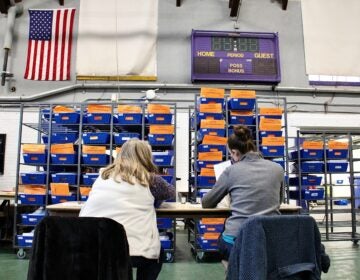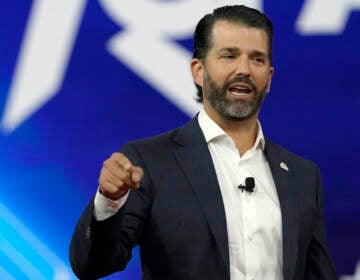History will remember 2020. Here’s four ways it will shape Pa. politics moving forward
Historians, public health experts, and grassroots activists told us these 2020 themes were most significant and will most clearly shape what the road ahead holds for Pa.
Listen 4:12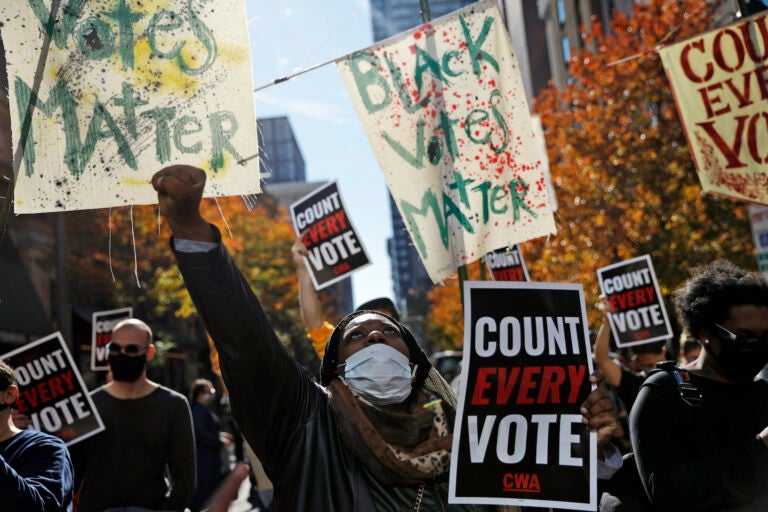
Zhanon Morales, 30, of Philadelphia, raises her fist as demonstrators call for all votes be counted during a rally outside the Pennsylvania Convention Center, Thursday, Nov. 5, 2020, in Philadelphia. (AP Photo/Rebecca Blackwell)
It’s not easy to recognize important historical moments while they’re happening.
But 2020 has been a year marked by disaster and debacle. It has featured a deadly global pandemic, a reckoning over racism in the wake of several Black Americans killed by police, and a tense, litigious election.
Looking back, historians, political insiders, and on-the-ground organizers agree that the last 12 months or so will leave an indelible impression.
“I don’t know a historian right now who isn’t still kind of in shock,” said Timothy Lombardo, a Philadelphia-born historian of conservative politics.
Lombardo, who is now a professor at the University of South Alabama, is careful to note it’s impossible to predict how the future will remember the present — too many moving parts and extenuating factors. However, it’s possible to take cues from the past.
So which 2020 themes were most significant and will most clearly shape what the road ahead holds for Pennsylvania? We chose four.
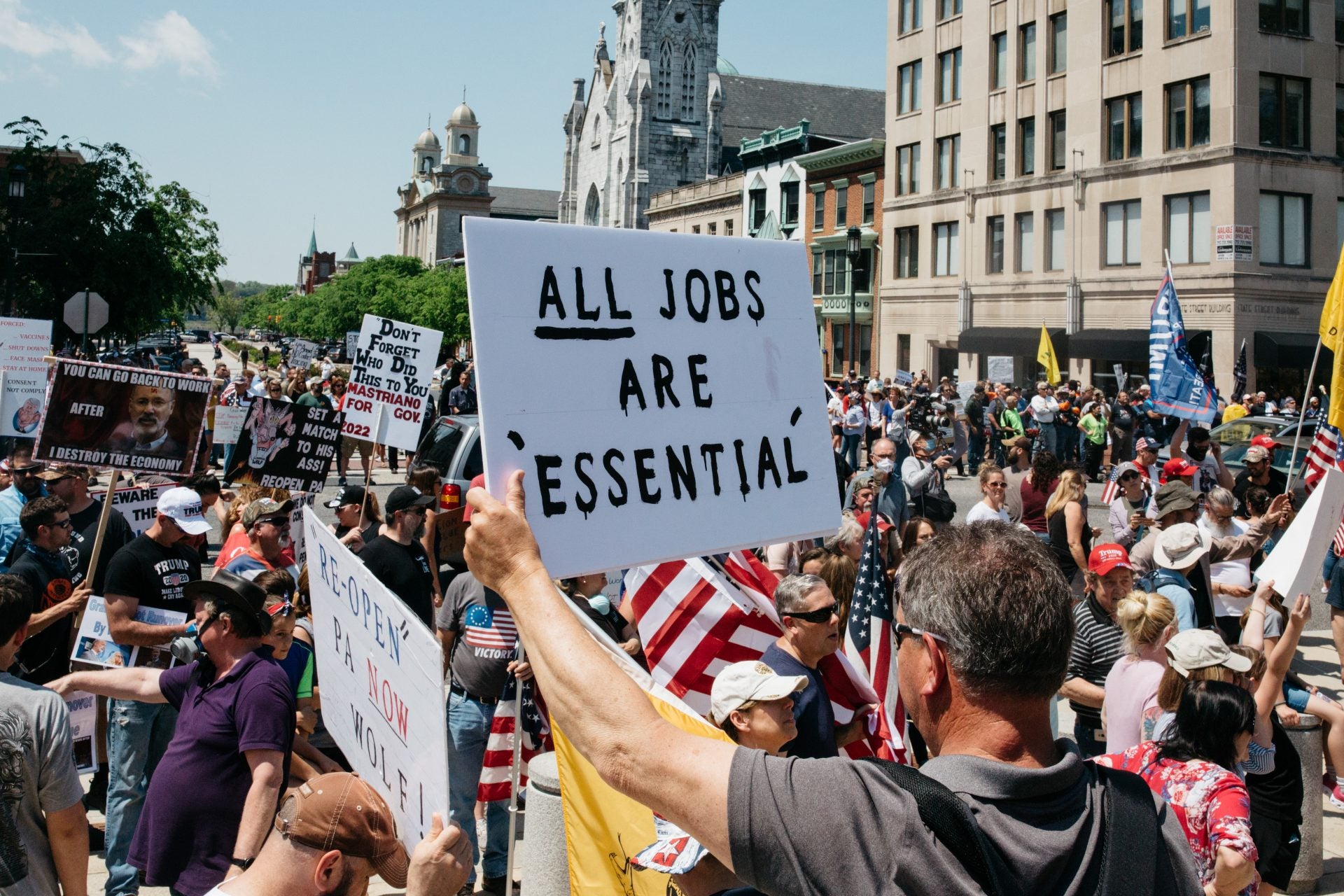
Partisan response to the pandemic lingers
Joe Amon thinks the U.S. response to the pandemic was fragmented almost from the very beginning.
He’s an epidemiologist and public health professor and heads Drexel University’s Office of Global Health. And he thinks the wheels began to come off when President Donald Trump decided to pull pandemic response authority away from the Centers for Disease Control and Prevention.
The move came after Dr. Nancy Messonnier, who directs the National Center for Immunization and Respiratory Diseases, gave a briefing on Feb. 26 explaining the seriousness of COVID-19, and warning that “disruption to everyday life may be severe.” The stock market fell, Trump was reportedly incensed, and soon afterward he announced that Vice President Mike Pence would oversee the White House’s response.
“She was immediately sidelined, and there were no more daily press conferences coming out of the CDC,” Amon said. “So that set the tone for things.”
At the outset of the pandemic hitting America, there was still some political unity.
Congress agreed on a first round of stimulus funding. In Pennsylvania, lawmakers quickly convened, passed rules to allow remote voting, and the GOP-controlled legislature and Democratic Gov. Tom Wolf decided how to allocate their federal money to individuals and businesses.
Counties and individual lawmakers more or less accepted Wolf’s lockdown orders for a while. But then, as months passed, their fragile, disaster-driven bipartisan peace broke down.
In mid-May, a group of GOP-controlled counties started declaring mutinies against the lockdown. In some cases, those moves were almost totally driven by state lawmakers who disagreed with Wolf but couldn’t build a coalition to stop him.
One Republican county commissioner, Gary Eichelberger, was put in the awkward position of having his local State House representatives announce that Cumberland County would start ignoring business restrictions, without his input.
“We were basically told to sign [their letter],” Eichelberger said at the time. “We had never seen the letter. We had never been consulted in regards to the letter.”
Amon said that scattershot, highly localized response has come to define pandemic responses around the country.
“What you saw was that some states decided that the message was anything goes. You can have a motorcycle rally with 450,000 people and not have a mask mandate. And other states put in lockdowns. What that created was a lot of confusion over what the science said was effective,” he said.
In Pennsylvania, the splits have taken the form of partisan protests against mask-wearing and limitations on business operation.
When Wolf most recently announced new restrictions in response to surging cases — a ban on indoor dining and closures of theaters and gyms that is slated to last until Jan. 4 — Republicans like House Leader Kerry Benninghoff accused him of trying to “cancel Christmas.”
Meanwhile, a growing number of Pennsylvania businesses are opting to ignore Wolf’s orders and keep operating on their own terms.
Symbolic, yet meaningful change due to protest pressure
In the still-dark early morning hours of June 3, a crew of workers descended on Thomas Paine Plaza in Center City Philadelphia and used a crane to dislodge a 2,000-pound bronze statue of Frank Rizzo, the city’s tough-on-crime police commissioner and mayor in the 1960s and ’70s.
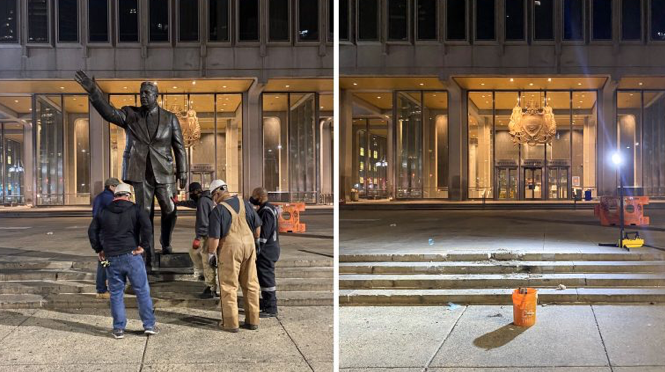
The statue was then loaded onto a truck and taken quietly away for storage.
The stealthy removal came after days of tense, sustained unrest across the city in the wake of George Floyd’s death under the knee of a Minneapolis police officer. To many of the protesters in the Black Lives Matter movement, Rizzo represented everything they were fighting against.
Lombardo, the conservative politics historian, wrote a book about what he sees as the conservative populism of the Rizzo years. It was published early in President Trump’s tenure, and Lombardo’s writing makes it clear that he sees a lot of common ground between the two.
He argues that both embraced a platform based on “grievance” and designed to appeal to white, blue-collar voters.
Rizzo made law and order promises, and opposed school integration via busing, affirmative action and subsidized housing in heavily white neighborhoods.
“And Trump’s entire 2016 campaign was based on resentment of immigrants, building a border wall,” Lombardo said.
Philadelphia has changed a lot since the Rizzo years. Lombardo thinks the 2020 protests were a big indicator that it has gotten younger, more diverse and more progressive. But shifts were happening long before 2020. In 2018, the city elected former public defender and avowed anti-mass incarceration progressive Larry Krasner as district attorney.
“How does a city that elects Mayor Rizzo elect Krasner?” asked Lombardo. “The answer to that is the 20 years of history in between, in which progressives and liberals really reshaped much of the city.”
Lombardo doesn’t necessarily think the removal of the Rizzo statue was, in itself, a huge or unexpected event. He noted that the statue was controversial from almost the moment it was erected across the street from City Hall in 1998.
But he thinks the symbol was potent: The city and Mayor Jim Kenney, who had long expressed vague plans to get rid of the statue but had dithered over it for years, were forced to act quickly and decisively.
Here was a moment when people came together to demand a difference in how history should be remembered and judged. Not long after Rizzo was evicted, a statue of Christopher Colombus was removed from a park in South Philly.
“I think it speaks to the dedication of the activists,” Lombardo said.
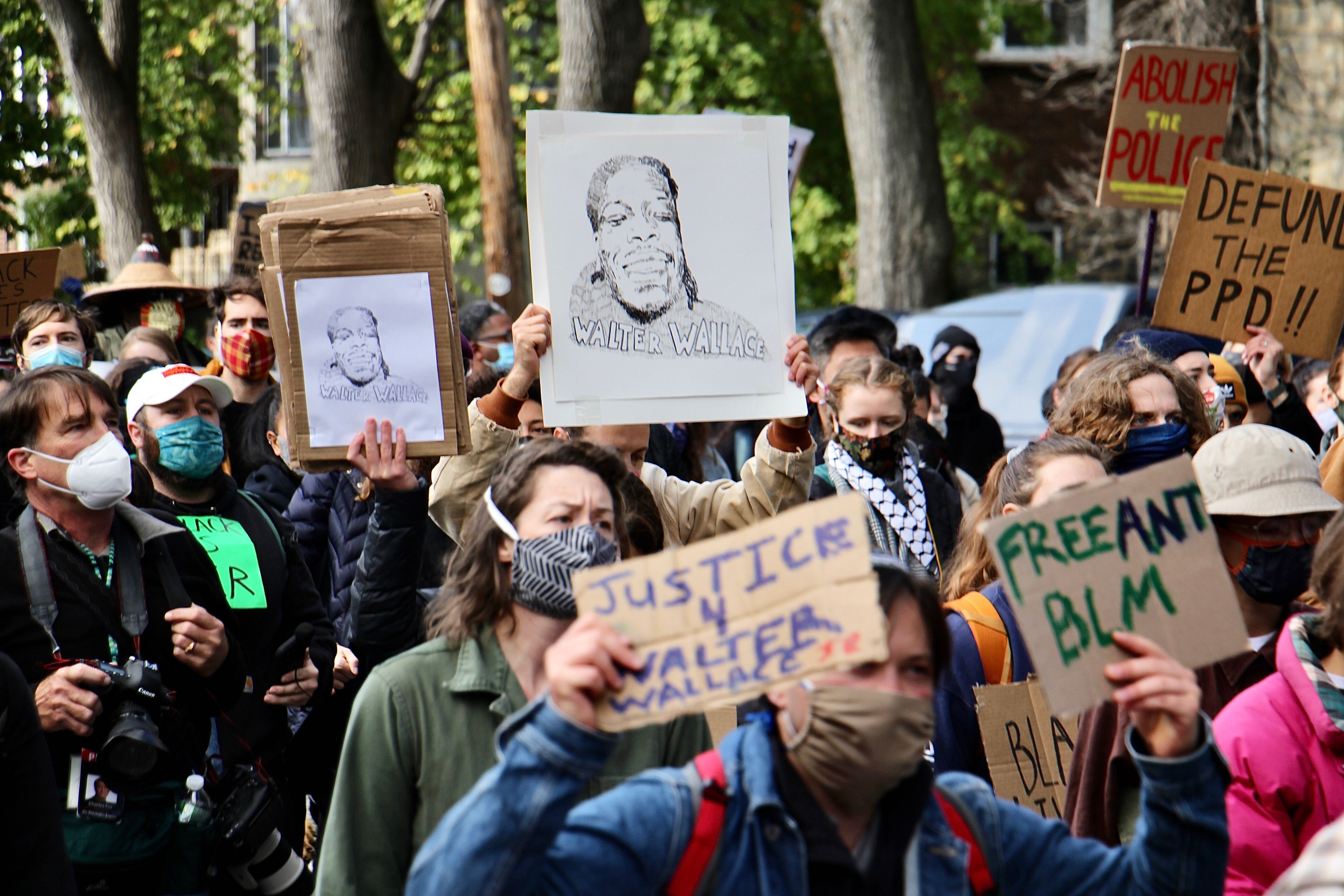
Widespread social justice reforms remain unsettled
Mary Frances Berry has seen a lot of protests in her life.
The historian and lawyer, 82, is a professor of American social thought, history and Africana studies at the University of Pennsylvania. She served for years on the U.S. Commission on Civil Rights, and was arrested many times as one of the leaders of the movement to end South African apartheid.
She said she wasn’t surprised when mass unrest broke out after George Floyd’s killing. It was caught on video, the footage was shocking, the pandemic already had people on edge, and many progressives, especially students, had the time and energy to take to the streets.
But she also isn’t too surprised that the movement’s momentum seems to have slowed.
“The election came, and the campaign for the presidency. And what it did was to disrupt and diminish the protests,” Berry said. “The establishment, the political establishment wanted to get everybody involved in the election, hoping they would forget about the protests and all the disruption. Because protests are disruption, that’s what they are.”
Berry thinks the 2020 protests are significant — too huge and widespread and raw to be forgotten. And she thinks a lot of local organizers are still making headway with progressive platforms — pushing to radically restructure policing, for instance, and advocating for formal reparations for African Americans.
But she also thinks that to actually achieve change, protest needs to stay disruptive and be sustained — long after Trump leaves office.
In her experience, that’s the hard part. When she was involved in the Free South Africa movement, which was able to push the U.S. government to formally sanction the country over apartheid, they held public protests every day for more than a year.
“The way we kept that going is there was a little group of people who met every day, who organized and got people to protest and go to jail and do everything else to make news stories,” she said. “You cannot win a protest movement if you don’t get any press coverage.”
So then, what might come next?
Berry isn’t particularly convinced that, as president, Joe Biden will do much to further the goals of Black activists like her. She called him “a nice guy who means well,” but one who is “moved by political winds.”
“I don’t think he is going to do anything major,” she said. “You can tell from the people he appointed … they are steady, good people who haven’t had a new idea in the last 30 or 40 years.”
But she doesn’t deny the ideas in the Black Lives Matter movement have at least caught fire in the public imagination, even if — in her opinion — they’ve sometimes become neutered, with people “getting in the suites [of power] instead of in the streets” and compromising, opting for studies and focus groups instead of immediate change.
In Philadelphia, the protests were met with some action from the city.
Mayor Kenney rescinded a proposed $19 million budget increase for police and later pulled out another $14 million to fund crossing guards and public safety officers. The police department changed policies to prohibit officers from kneeling on people’s necks or heads, ban tear gas during peaceful protests, and end the use of no-knock warrants. More recently, it increased its complement of Tasers.
A handful of other changes are in the works, but activists have maintained they don’t go far enough. They want to reroute police funding more dramatically, build stronger ties between police and the communities they’re supposed to serve, get rid of military-grade equipment and overhaul police union contracts to make it easier to fire officers.
Elsewhere in the state, the grassroots coalitions that came together in the summer are also trying to keep traction on these issues.
Kareem Williams, 24, lives in Milton, a borough of about 6,600 people in rural Northumberland County, north of Harrisburg. It’s almost 90% white, and Williams said that in high school he got used to being the only kid in class who wasn’t white.
He got heavily involved in local activism in 2020, after several Black people died at the hands of police, like Floyd and Breonna Taylor in Kentucky, or at the hands of white vigilantes, like Ahmaud Arbery in Georgia.
The group he helped start, “If Not Us, Then Who,” was organizing protests that turned out hundreds of people in central Pennsylvania at the height of the summer’s unrest. But as the weather has gotten colder and attention has been diverted to electoral politics and the worsening pandemic, he noted, it has gotten tougher to organize.
These days, he said, he still has a lot of reasons to feel hopeful. His group has gotten an audience with the Milton mayor to discuss things like police reform. They’re pushing the idea of getting social workers to take over certain police work, and have been steadily trying to get more young Black and Latino people into positions of power.
“Where I live, you don’t have any Black teachers, Black coaches, Black principals, Black mayor, Black police officers — you don’t have any of that,” he said.
He’s confident that the Black Lives Matter movement is now strong and widespread enough to last for a while. But there are things that still make him nervous.
“A lot where I live, I see stickers for [the white supremacist groups] Three Percenters, Proud Boys, things like that,” he said. “I know that this year is not going to make them go away. I know that Joe Biden’s presidency is not going to make certain things go away.”
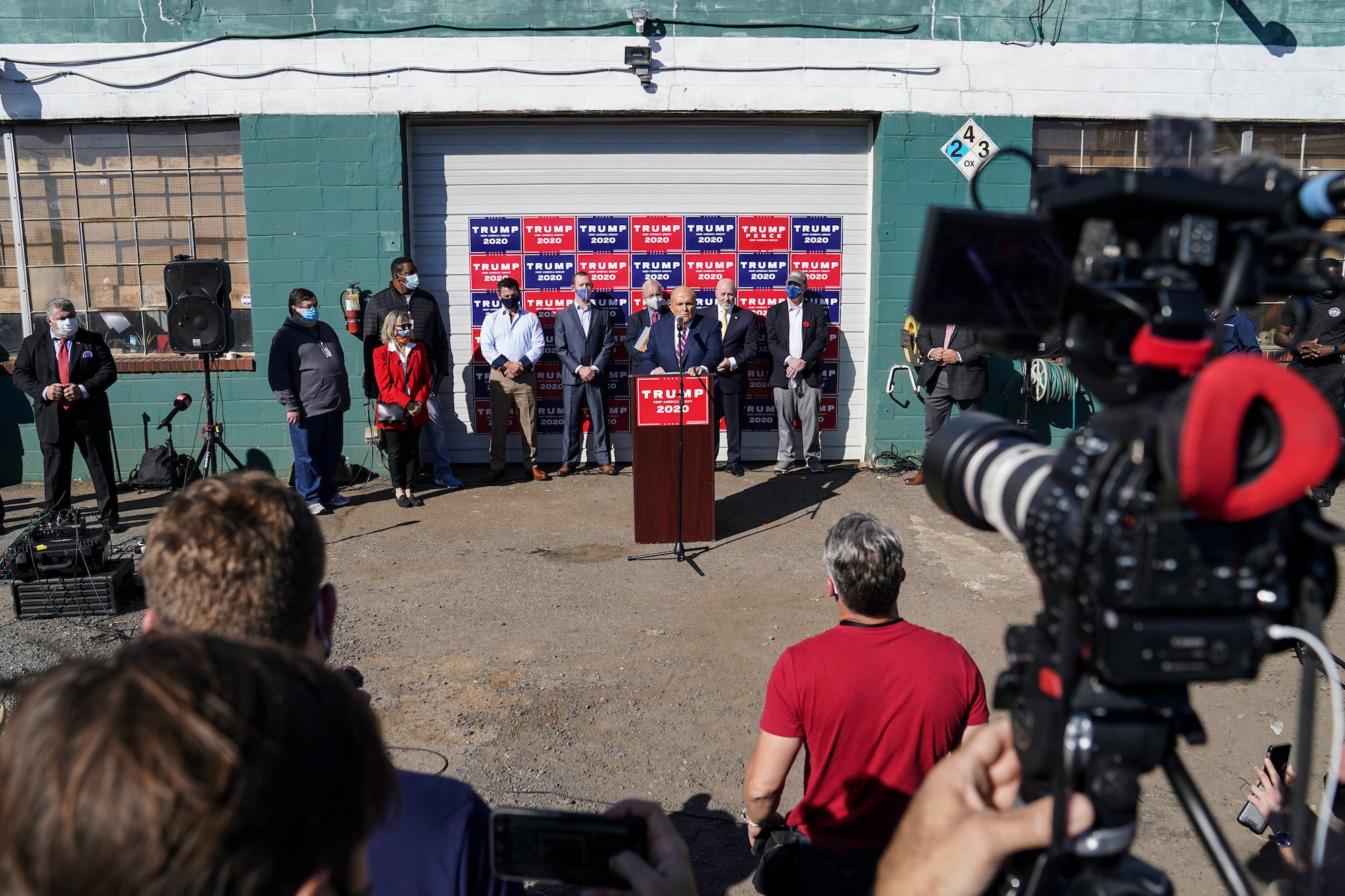
Pa. takes election’s center stage; GOP stands with Trump to end
For much of the year, amid the pandemic and the protests, the 2020 election loomed in the background, coloring political discourse and ratcheting up tension.
Ultimately, many of its most tumultuous moments were anticipated months in advance: Trump’s early lead among in-person voters, Biden’s dominance among mail voters, and the president’s insistence, after he got fewer votes and lost the Electoral College, that something had gone wrong with the count.
His campaign filed dozens of lawsuits around the country, concentrated in competitive swing states like Pennsylvania — which took the national spotlight and pushed Biden over the top in the Associated Press tally. The lawsuits, too, were expected. But on Dec. 10, the State of Texas filed something slightly more unusual in the U.S. Supreme Court.
This challenge was based on similar grounds as many of the others the Trump campaign and its backers had already attempted without success: It claimed that in four battleground states, Pennsylvania, Georgia, Michigan, and Wisconsin, there had been irregularities that should lead to their election results being tossed out.
Although Texas and its attorney general were the sole plaintiffs in the case, 17 states with Republican attorneys general sent amicus briefs in support, as did 126 U.S. House Republicans.
For Lombardo, the conservative politics historian, the fact that so many mainstream politicians signed on to such a long-shot lawsuit, after so many like it had failed, felt significant — a signal that the GOP had fully transformed into the party of Trump.
“On one hand, I completely expected it. That’s where the Republican Party has been for at least the last four years,” he said. “But there were still [hundreds of] representatives of the U.S. government willing to put their reputations, their place in history, on the line to back this idea that the election was fraudulent.”
Seven of those congressional Republicans were Pennsylvanians seeking to nullify the votes of every person in their state: John Joyce, Fred Keller, Mike Kelly, Dan Meuser, Scott Perry, Guy Reschenthaler, and Glenn “GT” Thompson.
Two other Pa. GOP congressional representatives, Lloyd Smucker and Brian Fitzpatrick, did not sign on.
The Supreme Court dismissed the lawsuit quickly and bluntly, writing that Texas had no standing to bring it.
Christopher Nicholas, a Republican political strategist in Pennsylvania, thinks that the election process did likely have procedural issues. He thinks Secretary of State Kathy Boockvar overreached her authority, and says the administration of the election could have been improved.
But the sheer volume of lawsuits, and their generally weak arguments, took him aback.
“What I could never understand was that these folks were asking essentially for their own elections to be thrown out as well … everybody ran for election or reelection on the same day,” he said. “There was no evidence of any widespread fraud.”
Nicholas is trying to look forward now, beyond Trump.
He noted that, on the state level, the playing field is actually good for Republicans. They maintained their majorities in the State House and Senate, even as Democrats had hoped for a blue wave that could give them more power.
With Wolf in his final term and his hopes for a Democratic-controlled legislature dashed, Nicholas thinks there’s new room for Republicans to up the pressure and command even more power — but only if they can get past Trump.
“I don’t see Trump as … conservative,” he said. “It’s become more of a personality cult and less of a party … it definitely is a problem, because we don’t swear allegiance to a person.”

Get more Pennsylvania stories that matter
WHYY is your source for fact-based, in-depth journalism and information. As a nonprofit organization, we rely on financial support from readers like you. Please give today.




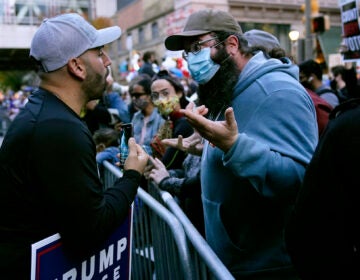

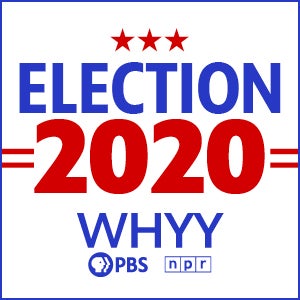
![CoronavirusPandemic_1024x512[1]](https://whyy.org/wp-content/uploads/2020/03/CoronavirusPandemic_1024x5121-300x150.jpg)
